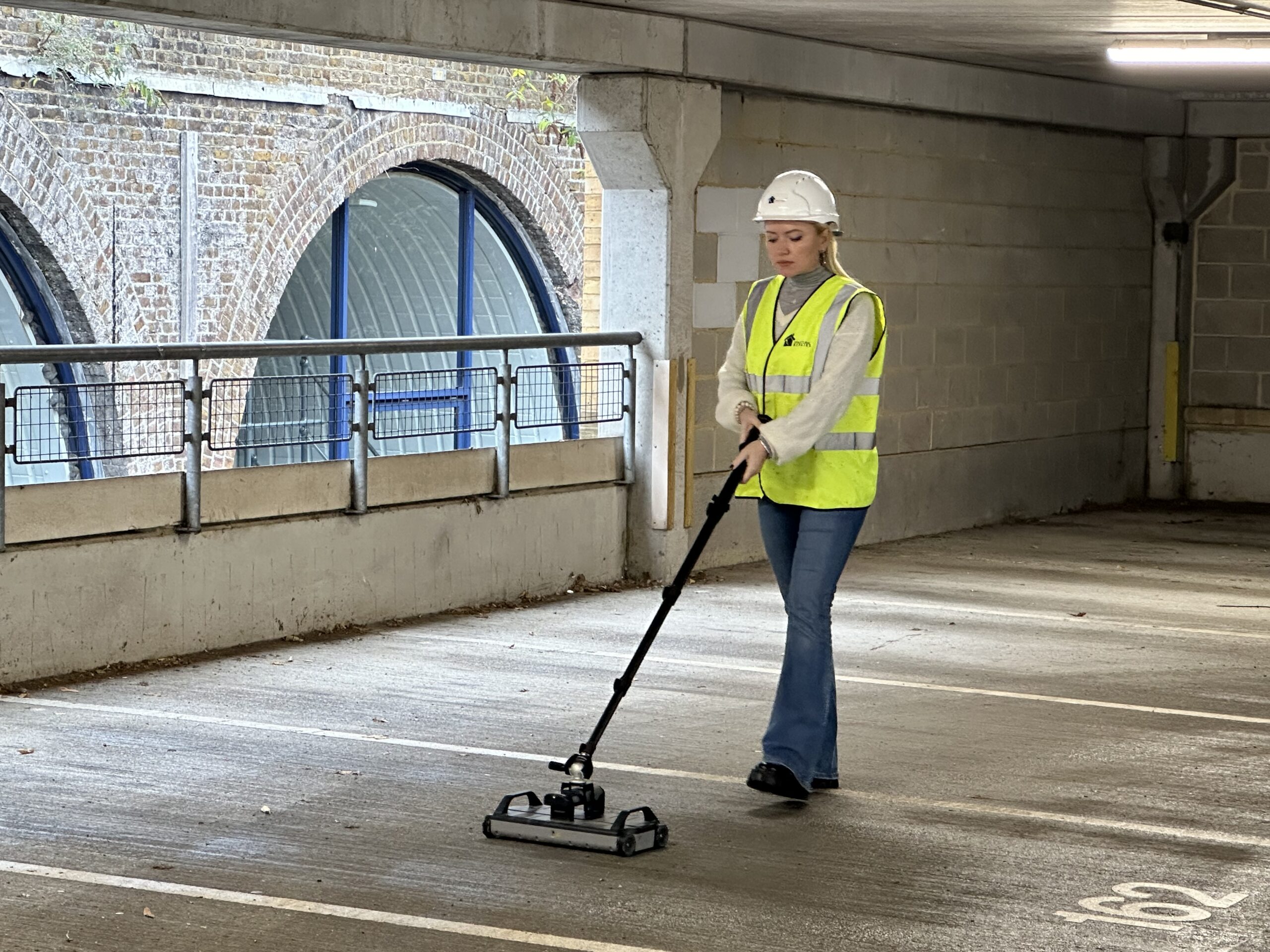Ground Penetrating Radar
What Is A Ground Penetrating Radar?
A Ground Penetrating Radar (GPR) is a non-invasive technological piece of equipment used to monitor structures such as buildings, bridges, tunnels, and the like.
GPRs are used to detect and identify what elements lie beyond the surface of these types of structures.

How Does A Ground Penetrating radar Work?
A Ground Penetrating Radar (GPR) transmitter operates by transmitting electromagnetic energy into a subsurface and recording the reflected pulses which bounce back as they encounter discontinuities.
These discontinuities are likely to exist in the form of a boundary or interface between materials with different dielectrics. In the same vein, they could likewise be a subsurface object such as a debond or delamination.
Changes in subsurface are detected and recorded due to differences in permittivity by receiving antennas and variations in the return signal, all of which are displayed on a radargram.
The amplitudes of the received echoes and corresponding arrival times are thus used to identify the location nature of the discontinuity.
How Deep Can A Ground Penetrating Radar See?
GPRs are known to be able to reach depths of up to 100 feet (30 meters) in low conductivity materials. Low conductivity materials include those such as granite, dry sand and the like. On the other hand, higher conductivity materials such as clays and shale are likely to absorb the signals a GPR omits thus decreasing the depth it is able to penetrate to.
With high conductivity materials, GPRs may only be able to penetrate to depths of 3 feet (1 meter) or less.
However, the depth to which a GPR is able to penetrate is not solely determined by the conductivity of the surface it is being used on.
The radar antenna used on a GPR likewise determines this range. For example, GPRs which low frequencies (100 to 200 MHz) are able to reach subsurface penetration of deeper depths such as 25 to 100 feet or more.
Each GPR is different, as is each surface being investigated.
Therefore, for more accurate information regarding your structure and unique situation, please feel free to get in contact with us as our expert team is able to provide you with a free consultation and quotation today!
What Elements Can A Ground Penetrating Radar Detect?
Ground Penetrating Radars are able to identify and analyse a wide range of different subsurface elements.
They are best able to find buried elements that are reflective given that these allow the radar waves the GPR emits to reflect back with greater strengths.
Examples of such include underground pipes, steel reinforcement bars, electrical wiring, and the like. However, this does not mean that GPRs are limited to identify highly reflective objects.
Other elements such as underground voids, grave sites or any other buried objects and features are likewise greatly picked up by these technological tools.
In addition, GPRs are able to detect through concrete, both when these structures exist as pure concrete or when they are reinforced.
In fact, GPRs are widely used as a means to detect and analyse reinforcing bars existing in concrete structures for engineering purposes.
How Accurate is A Ground Penetrating Radar?
GPRs are widely known to be extremely effective and accurate at conducting non-invasive and subsurface identification and analysis.
In fact, many GPRs are held up to a standard of being 100% accurate and are further said to be able to reduce concrete scanning errors to less than 1%. In comparison, other scanning methods existing within the industry are most commonly known to be able to scan up to a 25% error margin.
While certain aspects do affect the extent to which a GPR is able to scan to, for example the type of antenna it is working with or the type of surface it is scanning, the precision of a GPR across all of these aspects is nonetheless known to be up to utmost accuracy.
For further information regarding the type of GPR technology we employ here at Structural Repairs, please feel free to get in contact with our specialist team who are able to provide you with a free consultation and quotation today, along with answering any further queries you may have.
What Are The Benefits Of Ground Penetrating Radars?
There are a vast variety of benefits which users can take advantage of when it comes to utilising GPR technology.
For example, GPR is a subsurface identification method which is non-invasion meaning results can be obtained without a structure having to be tampered with or destroyed.
In addition, this also means that GPRs are extremely easy to use, are quiet in operation and are time efficient.
GPRs are further able to detect a large range of different elements, both metallic and non-metallic materials. GPRs do not pose health hazards to those utilising them and are able to be employed across a wide variety of industries.
They are likewise able to provide users with timely, permanent and colour mapped visual results which are further available in varying depth slices.
Results obtained by GPRs are able to provide depth estimates and are in general extremely accurate and effective.
GPR equipment do vary in characteristics, however, so for further information about the technology we utilise here at Structural Repairs, please feel free to get in contact with our expert and friendly team who are able to answer any questions you may have!
Structural Repairs are a leading global specialist